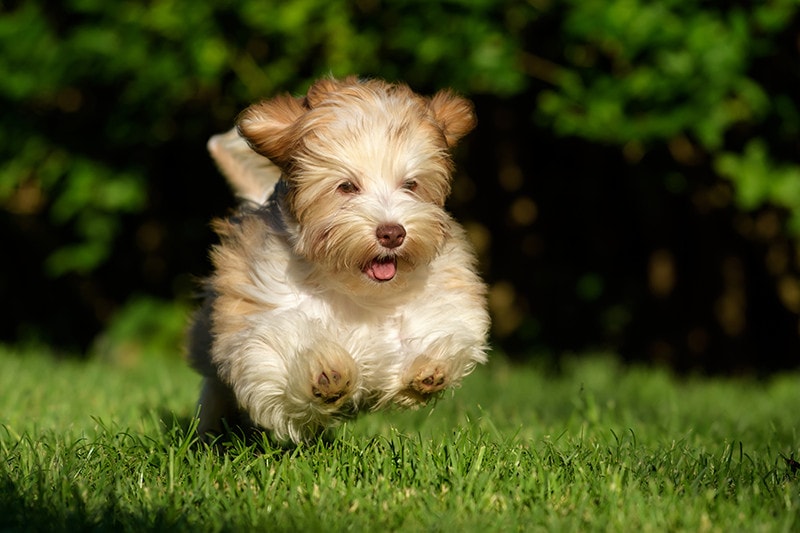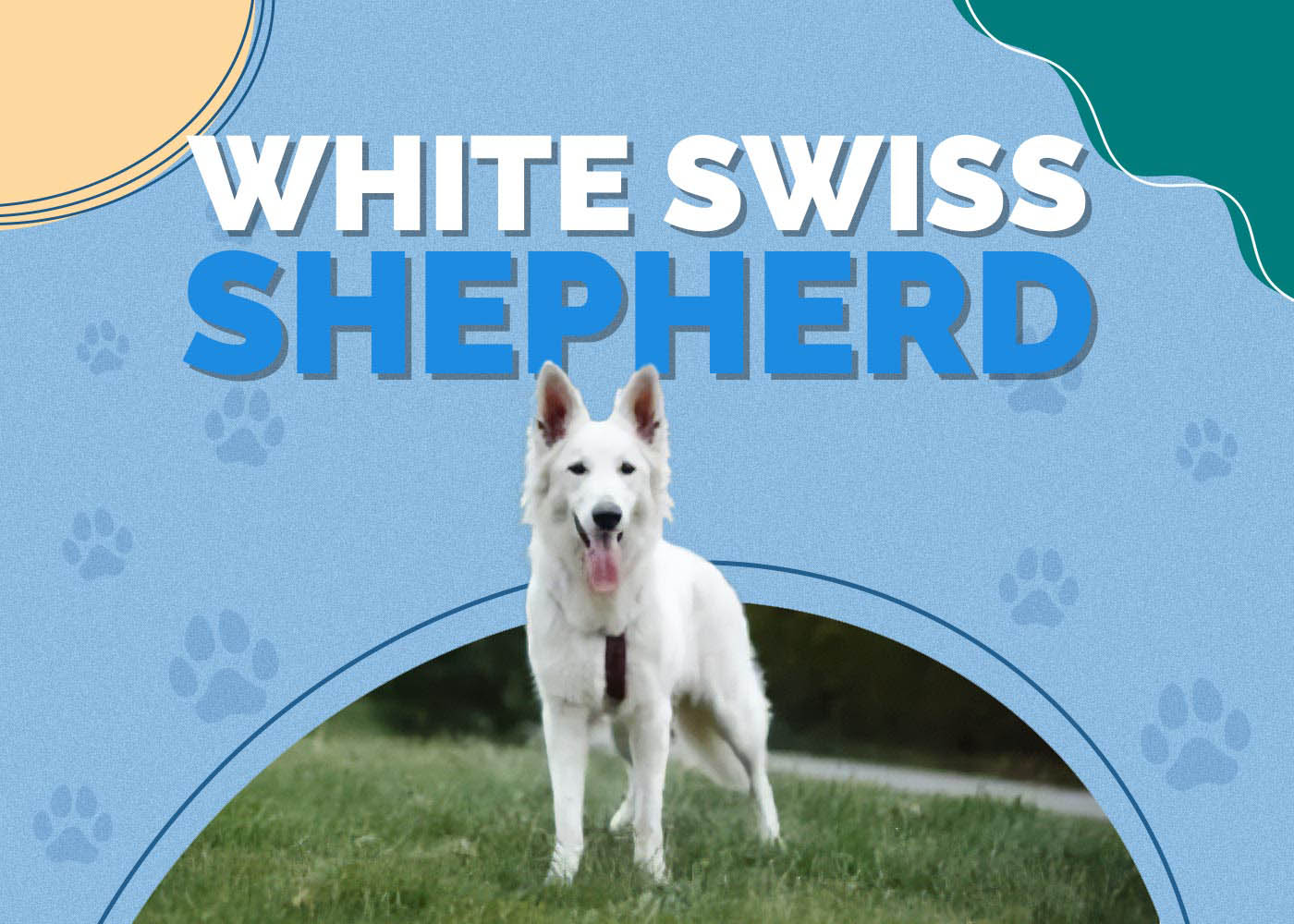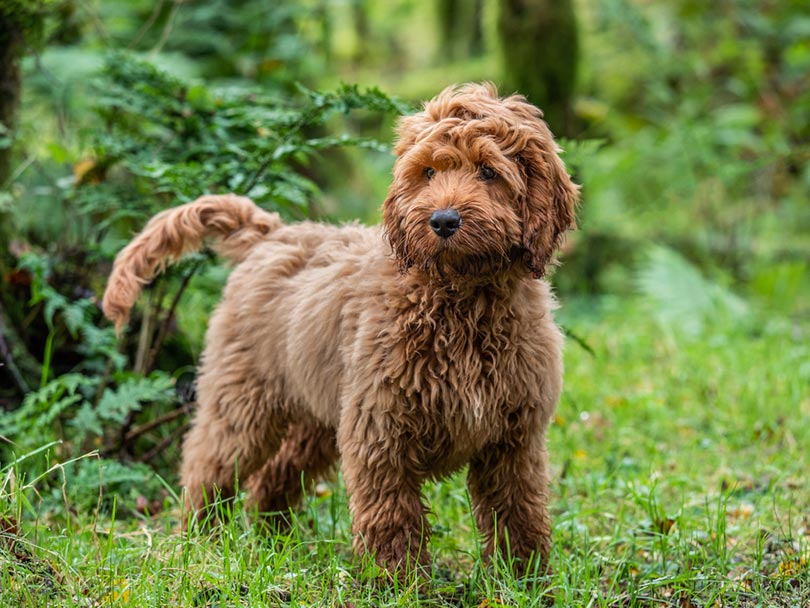Teacup Havanese: Guide, Pictures, Temperament, & Traits
Updated on

| Height: | Smaller than 8.5 inches |
| Weight: | Smaller than 7 pounds (usually 4 pounds) |
| Lifespan: | 12–16 years |
| Colors: | White, blue, black, silver, cream, gold, red, champagne, chocolate, sable |
| Suitable For: | Apartment living, families looking for extra-small dogs, those looking for low-shedding dogs, first-time owners |
| Temperament: | Playful, cheerful, curious, sensitive, intelligent, attached to their owner |
Looking for a bite-sized canine companion? If so, the Teacup Havanese may be your “cup of tea.” These little dogs, also called Mini Havanese, are extra small dogs that make excellent companions for seniors, apartment living, and really anyone who wants a very small doggie.
A miniature version of the Havanese breed, mini versions of dog breeds have become popular, but breeding a mini version of a dog breed comes with risks. Join us in learning about the Teacup Havanese and what to expect when owning one of these tiny dogs.
The Teacup Havanese is a miniature version of the Havanese and is not considered purebred. The Havanese dog breed is part of the toy group, so you can imagine how small a Teacup Havanese doggie can be. Mini versions of dog breeds have become popular but beware that breeding to get an extra-small version of any dog comes with health risks. Nonetheless, these little dogs are cheerful and smart and will bring a smile to your face.
The Havanese breed came over from Cuba with the Spanish in the 1600s. The Havanese is an old dog breed and is a descendant of the now-extinct Tenerife dog. Other ancestors include the Bichon, Maltese, and Coton de Tulear.
Teacup Havanese Puppies
Teacup Havanese puppies are adorable little things, but if you want one in your life, expect to pay top dollar. These tiny pups average between $1,495 and $10,000, depending on the breeder and your location. Mini versions of any breed will cost more than the normal-sized breed because they are rare (and so darn cute), allowing breeders to up the price.
You may have a hard time finding a breeder, and if you do, you’ll need to ask questions regarding how they breed their Teacup Havanese puppies. The reason we say this is because some breeders introduce a dwarfism gene to get the teacup size, or they may continuously use runts for breeding, both of which can cause health problems down the road. A breeder may also outcross with another small breed to get the teacup version, such as a Chihuahua or Yorkshire Terrier.
You can always check with your local animal shelter when searching for a Teacup Havanese. Dogs of all breeds, sizes, and mixes enter shelters daily, and you just may find a Teacup Havanese for much cheaper than buying from a breeder, if you can even find one.
3 Little-Known Facts About the Teacup Havanese
1. The Havanese Name Hails from Cuba
The purebred Havanese breed came to Cuba in the 1600s and quickly became a popular companion breed to have around. Given they hail from Cuba, it was only fitting to name these dogs after the capital of Cuba, which is Havana.
2. They Cannot Tolerate Cold Weather
Even though their hair is long, it doesn’t provide adequate warmth in colder weather. Their region of origin (Cuba) is a tropical environment, and the long hair was meant to protect against the sun’s rays and act as a cooling element during hot weather.
3. They Have an Adorable Walk
These little dogs have a “springy” gait with a bouncy-type stride. Given how small they are, their little limbs can only muster up this type of bouncy walk, which only adds to their cuteness.
Temperament & Intelligence of the Teacup Havanese
The Teacup Havanese is a happy little dog that will attach itself to its owner. They are easily trainable due to their intelligence and have a fun-loving disposition. These tiny creatures require living indoors only, and housetraining may take a bit longer than other breeds, requiring patience on your end. Tiny dogs also have tiny bladders, and your Teacup Havanese may never be fully potty trained.
The Teacup Havanese is a sensitive dog that will attach itself to its owner. As a result, your little bundle of joy may develop separation anxiety. Given this possibility, these little dogs do best with an owner who is home most of the time and not gone for long periods at a time.
Are These Dogs Good for Families? 👪
The Teacup Havanese makes an excellent family pet due to their affectionate nature and small size. However, if you have children in the home, ensure they are careful around the dog due to its small size. These good-natured dogs make an excellent addition to any family, and they do exceptionally well with apartment living. They can adapt very well to your routine unless you’re gone most of the day; they tend to have a mischievous streak when they get bored or miss you. Keeping plenty of toys around can help avoid destructive behavior. They enjoy light, outdoor activities, but limit exercise due to their small size.
Does This Breed Get Along with Other Pets? 🐶 😽
The Teacup Havanese gets along well with other pets, but remember that these dogs are tiny, so pairing them with a large dog is not ideal. A large dog may accidentally trample the Teacup Havanese, but it really depends on the temperament of your other dog or dogs.
The Teacup Havanese can be shy, making early socialization key to a successful pairing between your teacup and another dog.
Things to Know When Owning a Teacup Havanese:
Food & Diet Requirements 🦴
Given this breed is extra-tiny, it’s best to consult your veterinarian about what to feed your Teacup Havanese. They are prone to developing liver shunt, a genetic condition in which the liver does not receive the proper amount of blood flow due to abnormal growth, and your doggie may require a low-protein diet.
Exercise 🐕
The teacup Havanese loves to interact with its humans and will engage in play willfully. However, due to their small size, these little dogs do not require extensive exercise. A game of fetch a couple of times a day or roughly 30 minutes of activity per day is adequate for these tiny tikes.
Training 🎾
These little guys are intelligent and do well with praise while training. Remember that they have small bladders, which means housetraining may take longer than other breeds; in fact, a Teacup Havanese may never be fully potty trained. It’s best to own these little dogs if you’re home often so they can take as many potty breaks as needed.
Grooming ✂️
The Teacup Havanese coat is long, silky, and double-layered. The coat can be wavy or straight, and while these dogs are light shedders, their coat requires maintenance. You’ll need to brush them once a day to keep the coat from matting. Pin brushes are excellent for these types of coats. Grooming is a little more involved with these little dogs, as they need baths fairly often.
The eyes may need to be gently cleaned with a tearstain remover, and strive to brush their teeth as often as you can. Aim for brushing the teeth daily, or at least 3 to 4 times a week. Check the toenails and ears weekly, and if you’re more comfortable, take your little tike to a professional groomer as needed.
Health and Conditions 🏥
As we mentioned earlier, these little dogs can be prone to certain medical issues. Part of the problem begins with the breeder. Some non-reputable breeders may introduce a dwarfism gene to get the tiny size, or they may continuously breed runts, and these two methods are not considered ethical or safe.
However, if your Teacup Havanese is bred from a purebred Havanese (which is small already) with another smaller dog, a “teacup” version is often the result and is the healthiest route for a breeder to take. Keep in mind that these little dogs can live 12 to 16 years if bred properly, and not all will develop the following health conditions:
- Cataracts
- Hypothyroidism
- Obesity
- Patellar luxation
- Heart defects
- Liver shunt
- Respiratory Issues
- Legg-Calve-Perthes Disease
- Hip dysplasia
Male vs Female
Both males and females are loving little goofballs, but there are a few differences between the two. Females tend to be more territorial than males, and a female may demand more of your attention. Females may be a little more difficult to housetrain while males tend to be more laid-back, more tolerant of children, and more easygoing.
Final Thoughts
The Teacup Havanese may be hard to locate, as these tiny or “teacup” versions of the Havanese dog breed are hard to find. If you do find a breeder, ensure you ask questions about how they breed and be sure to visit the home where the dogs are bred. Ask to meet the parents, and always ask for a clean bill of health before taking your little bundle of furry joy home.
These dogs are excellent for first-time dog owners, and they do well with apartment living. They also make excellent companions for senior citizens, but keep in mind that they do require grooming maintenance. You can always hire a professional groomer to help with their grooming needs. In the end, these tiny “teacup” dogs are adorable and will make a wonderful addition to any family.
Featured Image Credit: Dorottya Mathe, Shutterstock












